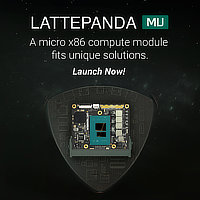Raspberry Pi
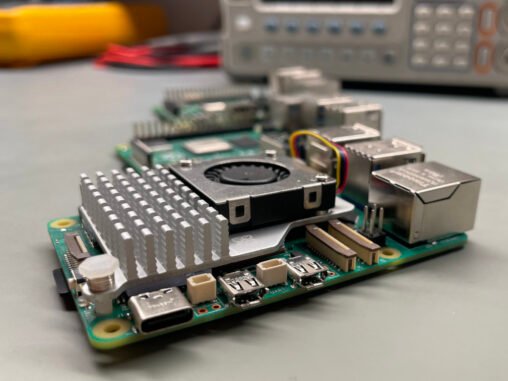
The Raspberry Pi 5 immediately outclasses its predecessors by offering a much higher 2.4 GHz base clock, which is immediately impressive. Of course, as we’ve seen in our Raspberry Pi 5 review, this comes at a cost, as the new Raspberry Pi very quickly gets quite warm during use and thus requires a robust thermal solution.
Despite this, there’s additional untapped performance in the Raspberry Pi 5. How far you can push your board is highly dependent on the silicon lottery, but looking at the early articles, the numbers we see most people cap out at are 2.8 GHz, 3.0 GHz and 3.1 GHz.
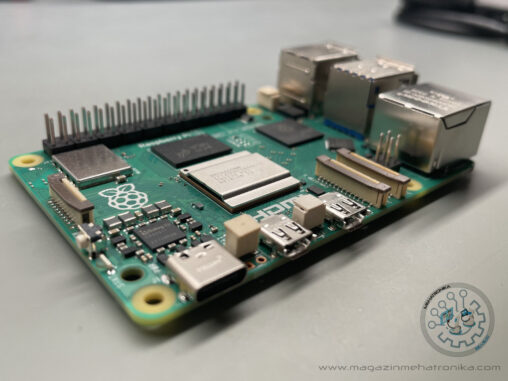
Move over Pi 4, there’s a new slice of Pi on the block.
It’s finally happening. The successor to the popular, but aging Raspberry Pi 4 Model B is finally here – the aptly-named Raspberry Pi 5 Model B will be available to purchase by the end of October. Spending an unusually long time at the helm – four years – and receiving a significant boost in 2020 with the release of the 8 GB model, the retiring legend truly had a good run.
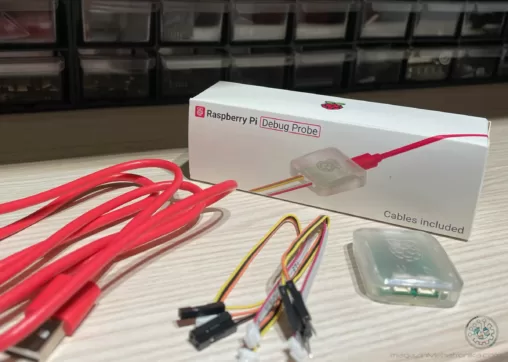
The excitement around Raspberry Pi’s product releases is always massive – their products, shaped by years of community (and top-notch first-party) support are representative of the way a piece of development tech is meant to function. From perfectly stable SBCs with mature OSs to the Raspberry Pi Pico MCU board which has been a community favourite since its 2021 debut, ease-of-use and and a highly polished user experience differentiate the company’s offerings from those of its rivals.
The Raspberry Pi Debug Probe which we’re taking a look at today explains its purpose quite splendidly by name alone: it’s an open-source debug probe providing both an UART and an ARM SWD interface, all at a very attractive $12 price.
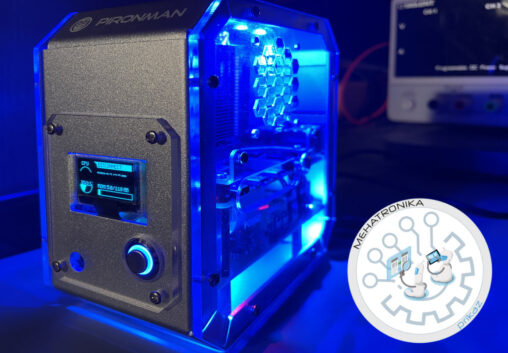
As single board computers progress and become more and more powerful, so does their use as a desktop replacement become ever more viable. We’ve talked about this before – with several companies marketing their products as capable of such feats while accomplishing the task with varying levels of success. We’re not quite there yet (with the exception of some Intel-based SBCs which encroach upon the desktop territory both in performance and price), ARM SoCs are quickly catching up to their x86 siblings and in some high-end cases even surpassing them.
But as technology tends to do, what once was the very summit of our prowess has since slowly trickled down and seeped into inexpensive parts, enabling the advent of many technologies in the consumer field. With that being said, it’s not hard to fathom the incredibly low prices and (relatively) powerful performance modern SBCs bring. Sure, the Raspberry Pi was the trendsetter and before its debut it had been incredibly difficult to obtain any serious “disposable” computational power. Nowadays, however, with so many contenders available, the SBC form factor is a market in its own right.
Despite the fierce competition, the latest entry in Raspberry Pi’s portfolio, dubbed the Pi 4B (our review of it can be found here), remains one of the most powerful and the most popular board on the market. Naturally, a wide array of accessories for the model have popped up, some of which are quite necessary thanks to the Pi’s poor thermal performance. Cases have also been popular from the inception of the SBC as protecting a computer’s guts from dust generally seems like the right idea.
In a market saturated with boards, cooling solutions for the former and boxes to shove the former two into, how do you stand out?

SBCs are great. Reading through our extensive list of SBC reviews we’ve created over the past few years, one can notice our own love for these little systems enabling everyone to deploy IoT systems and create various server-based projects, among other things. At the same time, certain models have proved themselves worthy of serious industrial use thanks to their wide IO arrays and reliability. SBCs also draw impressively little power, with the most power-hungry models rarely requiring more than 15W under top loads, making them very easy to power.
Sadly, that power is usually provided by a switched-mode power brick attached to a nearby outlet and delivered through a USB port – which means that there’s nothing between a power outage and your data being lost or services being fully interrupted. Short of a full-size desktop UPS, there’s not much that can be done to combat outages – but given the fact that compact size is one of the biggest upsides of an SBC, it’s easy to see why a large, bulky battery backup box is somewhat inappropriate in most use-cases.
In today’s review we’re taking a look at a solution to this problem – SunFounder’s PiPower – a tiny, easily attached and sleek UPS system designed for SBCs. While it’s not the first device of its kind, it’s certainly the neatest one we’ve seen so far. SunFounder sent this device free of charge to us for review purposes.
Inside the box are quite a few parts – all the screws and standoffs, an acrylic backing plate, a screwdriver and the PiPower module itself. Two high-quality braided cables (one Type-C and one Micro USB) for connecting the UPS to the SBC are also included in the set – which is a great touch. These cables are extra-short, which is great for keeping the setup tidy (can you even easily get such tiny cables commercially?) and for keeping the overall footprint small.

We’ve already the overheating tendencies of modern SBCs a few times in the articles we’ve written in the past. Seriously, these little powerhouses need some sort of cooling – be it passive or active – to retain their peak performance for a reasonably long time.
Some of them come with stock heatsinks, while others don’t. The latter group is thus often left by most users to overheat and throttle, seriously lowering performance. Sitting at a not-so-nice toasty 80°C, while technically safe, is not the best practice and certainly does not do any good to the CPU.
Most solutions for cooling single-board computers come in one of two flavours: a small heatsink or a small heatsink with a fan bodged atop. While this is reasonably effective for low-TDP SoCs, it leaves a bit to be desired, especially when overclocking.
SunFounder had something different when they sent us the Raspberry Pi 4 IceCube cooling solution. It’s a proper little heatpipe-based system with a radiator and an RGB (everything has to be nowadays) fan. It looks like a miniature version of a proper desktop cooling setup – and it’s adorable. The mounting was pretty straightforward – as the cooler holds itself suspended on four arms right above the CPU, RAM, ethernet controller and the USB controller. The IceCube uses rather thick thermal pads to couple the bottom of the heatsink – which does make using thermal paste a bit of a challenge – but in our tests the provided thermal pads worked a treat!

We all love our Rapsberry Pi 4s, but it’s not a secret that they tend to overheat. Painfully so. It’s been the main complaint of every owner of one of these SBCs – and in our initial review of it, we’ve discovered that these issues aren’t limited to cosmetics only – as they negatively impact performance due to thermal throttling.
There’s also quite a few strong reasons to decide to keep a Pi 4 in a case – keeping the dust away, and keeping any nasty ESD currents at bay. This all boils down to a case being almost a necessity – but most cases, including the official Pi 4 case only make the situation worse. During our testing, the Pi hit its 80 degree throttle point extremely easily, within a few minutes of its four cores hitting the full 1.5 GHz base clock. This makes performance take a huge dip, turning the class-leading A72 cores against themselves. We’ve seen benchmarks where systems with smaller, but more heat-efficient A52 cores win over the Pi in a textbook tortoise-and-hare example. The little cores just simply never slow down.
Cooling cases, thus, are a necessity for this SBC, and today we’ve got a Waveshare Pi 4 Cooling Case with us. It’s a simple contraption – two slabs of solid milled aluminium and two fans. The magic, though, is in how well it works.
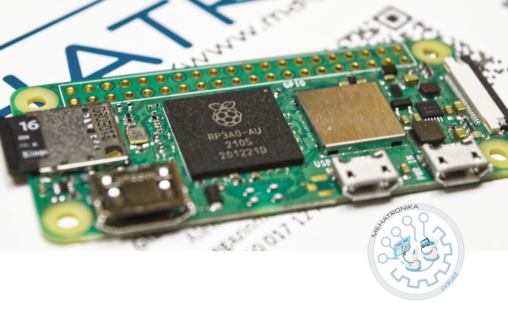
Once again, Raspberry Pi have created an excellent product that has its rightful place in the lineup, offering a viable replacement for the flagship Raspberry Pi models in most projects that don’t require a lot of graphical processing. It’s hit a perfect niche, and will probably better suit these than the higher-specced Pis in the lineup, mainly due to less heat output, power draw and a smaller footprint. Overall, while not a desktop computer in any way, the Raspberry Pi Zero 2 W is an exceptionally capable system for project usage available at an industry-leading price.

Another year has rolled around and there are new exciting Raspberry Pi products coming out on the market. Most of them are about what you’d expect – refinements and new form factors of the already established Raspberry Pi series of SBCs. We’ve already reviewed one of their newer models – the Raspberry Pi 4B computer in one of our previous issues. But now, the company seems to be dipping its toes into a new product segment that’s long since been dominated by Arduino and TI. MCU development boards have traditionally existed alongside single-board computers with little competition between the two fields. With the Raspberry Pi Pico, a microcontroller development kit from Raspberry Pi, we might be seeing the start of a new chapter for this market.
With that being said, let’s move on to the review. The Raspberry Pi Foundation has once again kindly provided us with review units of the product in question. The package we received was an envelope with a few of these tiny boards packed in carrier tape. This was surprising, but extremely clever. The packaging costs must have been shrunk to the absolute bare minimum (which we wholeheartedly welcome) to allow for the board’s minuscule $4 price tag. This makes it one of the cheapest development systems available today, but it still managed to punch far above its price class – we’ve seen features here that are absent on systems orders of magnitude more expensive. (On second though, is that not exactly what Raspberry Pi did with their original SBC models?)
After the unboxing (erm… unpacking?) experience, we were greeted with, or should we say, a lack of header pins. This, though, had been quickly overcome with a soldering iron and a tad of patience, and not even a full ten minutes later we had a set-up Pico ready to use on a breadboard! As a side note here, the soldering process was really a breeze, and the copper pads on the PCB were very high quality, so we feel like even beginners could add pin-headers on their board.

Hubor is a series or Raspberry Pi accessories by Xinguard, a relative newcomer to the SBC world, debuting their first products in 2019. They launched this line of products as an Indiegogo campaign, raising enough money by early backers to develop the line of cases and other add-ons for the SBC.
When Xinguard reached out to us and asked us to send some samples for review, we were very intrigued. While we’ve never heard of the company before, some research later, we’ve acquired quite an interest for the unique case system in offer here.
We’d also like to take this chance to note that our opinions in this review are fully unbiased and are not influenced by any third party, including the company providing us with the units.
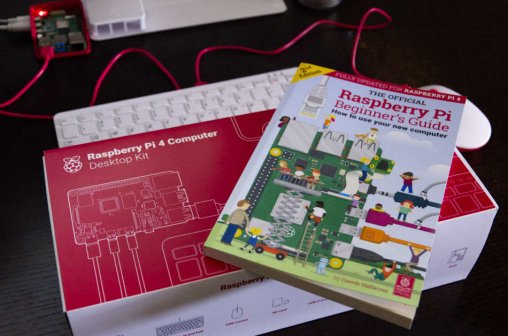
The Raspberry Pi 4 Model B came out a few weeks ago, and it brings a major leap forward in general usability and performance compared to its predecessors. The previous major revision of the board, the Raspberry Pi 3 Model B+ paved the way towards a viable desktop replacement, but just wasn’t quite there, whereas the new model promises to finally reach the aforementioned goal of every single-board computer out there – to get onto your desks as a complete alternative to a standard PC.
Raspberry Pi has always been the go-to board for tinkerers, engineers and developers. Its versatility as a platform, open access to a large GPIO header, low cost, open-source hardware and software, and the great community around it are ensuring that more and more people keep getting drawn towards it. Numerous robotics, IoT, CS and electronics projects are made with a Pi in their heart. Another major demographic of the community is comprised of students having their first foray into programming.
The Raspberry Pi 4 Model B comes in three variants, differing only in the amount of RAM they are equipped with. The base model keeps the 1GB of its predecessors and maintains the traditional $35 price that the full-size boards have always gone for, while the 2GB and 4GB models run for $45 and $55, respectively. It’s also worth noting that the RAM of the new board is LPDDR4, which is much faster than the LPDDR2 used in the previous iterations.
Other new additions include the USB-C port, now used for powering the board, two USB 3.0 ports, true gigabit Ethernet, two micro-HDMI ports (that can go up to 4K 60Hz on one port or 4K 30Hz on both), Bluetooth 5.0 and last, but not least, a greatly upgraded SoC at the heart of it all.

